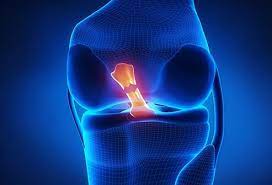

A tear in the ACL ligament can cause major injury in the knee and you need to consult the best ACL doctor in Jaipur. The knee joint is formed by the three bony structures called the femur, the tibia, and the patella. The Anterior Cruciate Ligament (ACL) is known to be the main ligaments in the knee that connect the femur to the tibia and is one of the commonly injured ligaments of the knee. The incidence of ACL injury is higher in individuals who participate in high-risk sports such as football, soccer, basketball, and skiing. The ACL injuries occur in combination with damage to the articular cartilage, meniscus, and other ligaments such as MCL, LCL, and PCL. As a result, patients might develop bruises of the bone beneath the cartilage surface.
The major ACL injuries occur due to damage to the other structure in the knee. These injuries are known as sprains and according to the best ACL doctor in Jaipur. considered as ‘sprains’ and can be categorized into different grades based on the level of severity. In the Grade 1 Sprains, the ligament is mildly damaged due to slight stretching but can hold the knee joint to keep it stable. In the Grade 2 Sprains, the ligament is stretched to an extent that makes it lose. This is referred to as the partial tear of the ligament. In the Grade 3 sprains, there is a complete tear of the ligament and the joint becomes unstable due to the splitting of the ligament into two parts. Most of the complete ACL tear occurs as compared to a partial ACL tear.

According to the best ACL surgeon in Jaipur there are several reasons for a torn ACL such as stopping suddenly, changing direction rapidly, direct landing from a jump in an incorrect way, sudden slowing down while running, direct contact or collision, for instance, a football tackle, etc. The most common symptom of the ACL tear is a popping sound in the knee and it feels like that the knee is unable to function properly. Other typical symptoms of the ACL injury include loss of full range of motion, significant discomfort while walking, and tenderness along the joint line. In case of a complete tear of the ACL, the individual experiences pain with swelling. If not taken proper care and treatment, the swelling and pain might reduce on their own but there will be always a risk for further damage of the knee in case the person returns to sports activity.
The treatment of ACL injury can be done using both surgical and non-surgical treatment. Elderly patients or patients who are not involved in activities like sports can be recommended this option. Physical therapy and Bracing are the commonly suggested types of treatment. In case of surgical treatment, ACL Reconstruction Surgery can be done which surgically repairs the ACL and also helps in restoring the stability of the knee. The torn ligament is replaced with a tissue graft. The grafts can be taken from several sources such as the patellar tendon that runs between the shinbone and the kneecap or the Hamstring tendons that are present at the back of the thigh. In some cases, a quadriceps tendon is also used that runs from the kneecap to the thigh. In other cases, cadaver graft (allograft) can also be used.
The ACL reconstruction surgery is performed with the help of arthroscopy that involves making small incisions. The ACL doctor in Jaipur considers arthroscopy to be the best as it is less invasive. The other benefits of the minimally invasive technique are reduced pain from surgery, shorter hospital stay, and fast recovery time. Further, rehabilitation is an important part of the overall recovery phase whether the patient undergoes the surgery or not. Physical therapy will allow the patient to regain motion and strength in the knee and the surrounding muscles. The other goal of the program is to strengthen and protect the newly constructed ligament. This helps in slowly increasing the stress across the ligament and the athlete/ player can return to the respective sports.